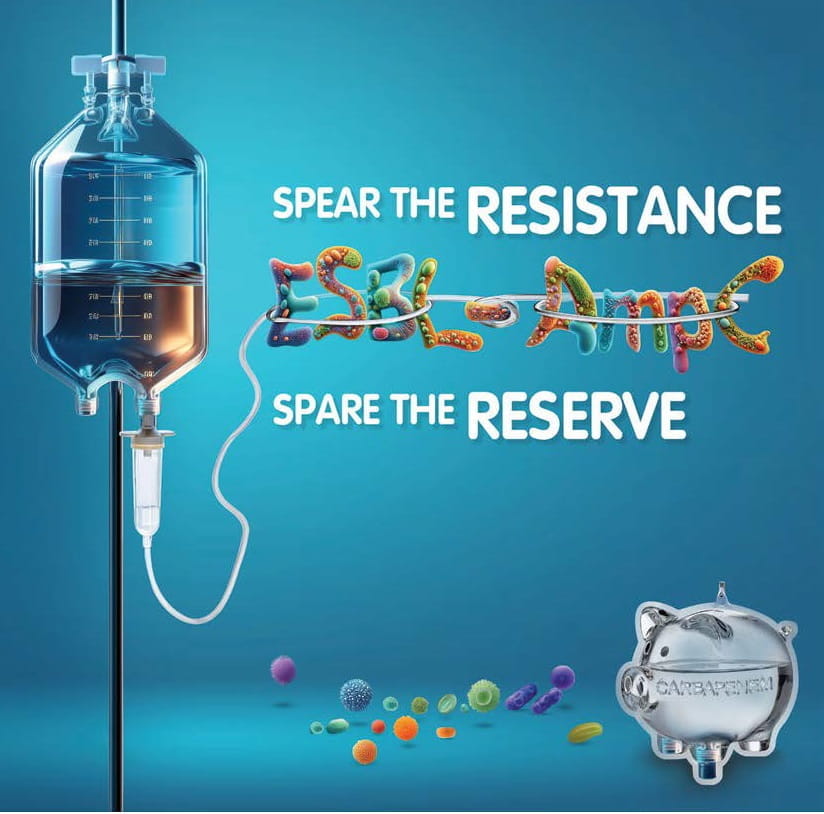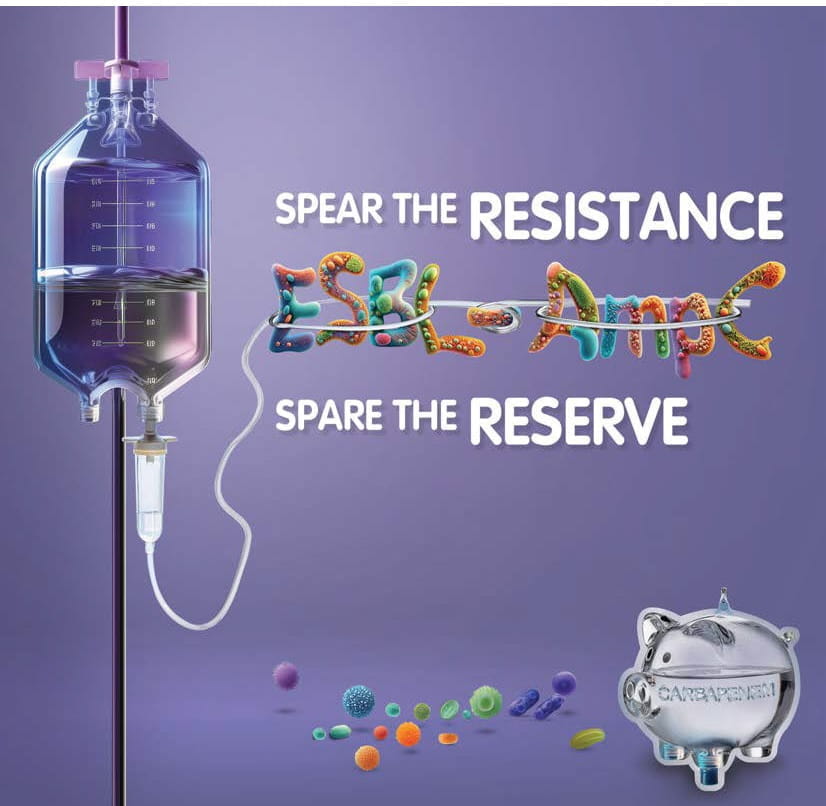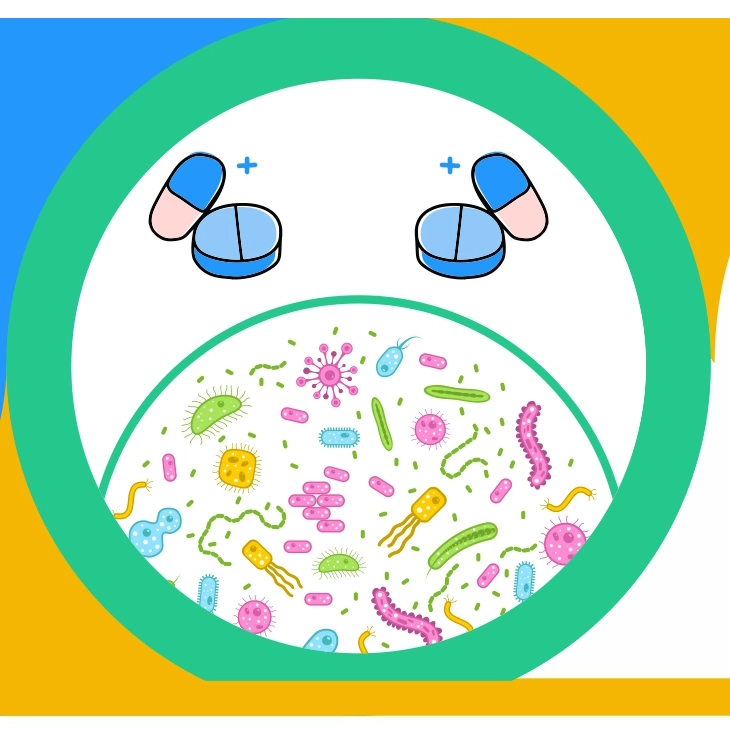Strong alignment between national treatment guidelines and WHO AWaRe book recommendations for pediatric infections
Speaker: Dr. Daniele Dona, Italy
Key Highlights
Introduction:
90% of antibiotics are used in primary care, with around half used inappropriately due to factors like unnecessary use, broad-spectrum selection, or incorrect dosing. To address this, WHO classified antibiotics into Access, Watch, and Reserve groups in 2017. In 2022, WHO released a workbook (AWaRe Book) guiding empiric treatment for 34 common infections, covering drug choice, dosage, and duration. Most antibiotics in primary care were from the Access group. A UN target was set for 70% of human antibiotic use to come from this group.
Aim:
The aim of the study was to compare the first- and second- line antibiotic recommendations for pediatric infections in various Standard Treatment Guidelines (STGs) with the WHO AWaRe Book, focusing on WHO AWaRe classification and antibiotic type.
Method:
-
It was a systematic review study where all the pediatric STGs globally were collected and analyzed the first- and second-line antibiotic treatments and compared the results with WHO AWaRe Book.
-
80 countries were selected and out of 4639 documents 156 were included. It was found that Africa STGs demonstrated the highest level of inclusion covering nearly 85% of infectious syndrome and Europe had the lowest level of inclusion which was nearly 60%.
-
The main infectious diseases included: Upper Respiratory Tract Infections (URTIs), Community-acquired pneumonia (CAP), Odontogenic infections, Gastrointestinal infections, Urinary tract infections (UTIs), skin and soft tissue infections (SSTIs).
Results:
Most countries’ guidelines for treating children’s infections recommended using Access group antibiotics (the safer, narrow-spectrum ones) as the first choice, which matches well with the WHO’s AWaRe Book.
However, when it came to second-choice antibiotics, the agreement was less. More than half of the recommendations were for Watch group antibiotics (which are broader and should be used more carefully), and these varied a lot between countries.
The most commonly recommended Access antibiotics were:
-
Amoxicillin
-
Co-amoxiclav
-
Phenoxymethylpenicillin
Second-line options, antibiotics included:
-
Azithromycin
-
Second- and third-generation cephalosporins
When the guidelines were scored for how closely they matched the WHO AWaRe Book, there was good alignment for first-line treatments in most regions—except for more variation in Africa. But for second-line treatments, the match was generally lower and more inconsistent. Specific infections were also looked at and it was found that there is high agreement for things like:
-
Ear infections
-
Oral infections
-
Sore throat
-
Skin infections
But lower agreement for:
-
Stomach infections
-
Pneumonia
-
Urinary tract infections
A scoring system (0 to 5 points) was created to measure how closely national Standard Treatment Guidelines (STGs) matched the WHO AWaRe Book. The score was based on:
|
Component |
Points Given |
Meaning |
|
Antibiotic Match |
0 to 3 points |
Based on how closely the drug matched in group, class, and exact type. - 0 = totally different - 3 = exact match |
|
Treatment Line Match |
0 to 2 points |
Compared whether both recommend it as 1st or 2nd line. - 0 = mismatch (e.g., 1st vs 2nd) - 2 = same line |
Conclusion:
It was concluded that first-line antibiotic recommendations in national STGs for pediatric populations largely aligned with the WHO AWaRe Book with a significant proportion of access group antibiotics. The second-line treatments show lower alignment with increased use of Watch antibiotics. Regardless of a country's income levels, the WHO AWaRe Book recommendations were adaptable across all healthcare settings. In order to achieve the United Nations General Assembly (UNGA) target of 70% antibiotic use, countries need evidence based STGs.
Interleukin-6 as a diagnostic biomarker for sepsis in neonates, children, and pregnant women
Speaker: Dr. Seán Olann Whelan, Ireland
Key Highlights
Introduction:
The diagnosis of sepsis is difficult, especially in neonates, children, and pregnant women due to a few reasons which includes lack of consensus definitions, presence of overlapping conditions and suboptimal performance of current tools like blood cultures and biomarkers (e.g., CRP, PCT). Sepsis biomarkers have therefore been used as clinical adjuncts in order to make the risk assessment. These biomarkers can be used as diagnostic biomarkers for early risk stratification, predictive biomarkers for prognostication and it can also be used for treatment de-escalation.
Interleukine-6 (IL-6) is a cytokine which has pro and anti-inflammatory effects and it has gained some attention as a sepsis biomarker due to a few factors like faster response time (rises within 1 hour, peaks within 6 hours) as compared to CRP or PCT which typically peaks >6 hours’ post-insult and its close alignment with physiological response to infection.
Main Objective:
The aim of the study was to assess the diagnostic utility of IL-6 as a sepsis biomarker in neonates, children, and pregnant women and compare it with other biomarkers.
Methods:
-
It was an observational study which included 245 patients (111- children, 72- pregnant women and 62- neonates).
-
Patients were categorized according to the following factors:
-
Physiological severity: Included normal - sepsis - septic shock
-
Etiology: Included infection - viral infection - bacterial infection
-
IL-6 levels were measured for all the patients and all IL-6 values were blinded during clinical chart review.
Results:
-
It was seen that in 91% of the cases IL-6 decreased rapidly after first sampling which showed that it outperformed PCT and CRP.
-
When the disease states were compared across groups it was seen that only IL-6 showed statistically significant stepwise elevation across both physiological and etiological axes in all three populations.
-
The following table shows the values for physiological and etiological Area Under the Curve (AUC) across the three groups
|
Group |
AUC (Physiological) |
AUC (Etiological) |
Notes |
|
Children |
0.85 |
0.91 |
Outperformed CRP, PCT, and neutrophil-to-lymphocyte ratio |
|
Pregnant Women |
0.78 |
Excellent |
Specificity in physiological axis was lower (~55%) |
|
Neonates |
0.86 |
— |
Sensitivity increased to 81.2% after excluding "clinical-only" sepsis |
Clinical application:
-
IL-6 is now widely accessible post-COVID, via commercial assays (e.g., Roche)
-
The turnaround time for IL-6 is 8 minutes which costs approximately €10
-
Clinicians are advised to tailor biomarker requests based on the specific diagnostic question rather than broad panels
-
Labs are now capable of offering near real time testing which includes out-of-hours for high risk patients.
Conclusion:
It was concluded that IL-6 demonstrates significant promise as an early and dynamic biomarker for sepsis in pediatrics and obstetrics. As seen, when compared IL-6 is seen to be a better marker in diagnostic accuracy as compared to other markers because of its early rise time, diagnosis accuracy and correlation with disease severity. In spite of a need for further prospective validation, IL-6 has a rapid assay turnaround and expanding availability making it a clinically actionable tool.
Impact of rapid diagnostic stewardship interventions to reduce blood culture utilization in a pediatric medical center
Speaker: Dr. Esther Vaugon, Canada
Key Highlights
Introduction:
There was a nationwide shortage of blood culture bottles due to manufacturing disruptions in 2024. In order to tackle this problem a multidisciplinary team was formed and a diagnostic stewardship initiative was implemented at Children’s Hospital Los Angeles (CHLA).
The task force established electronic medical record (EMR)-based restrictions which included the following:
-
Ordering cadence limitations:
-
Aerobic Bottle 01 (1 per 48 hours)
-
Anaerobic Bottle (1 per 7 days)
-
Aerobic Bottle 02 (optional and restricted to 1 per 7 days)
-
Pooling of lumens: For patients with central lines, samples from all lumens were pooled unless multiple central lines existed.
-
Override Permitted: On-call microbiologists could approve exceptions to ensure patient safety
-
Syndrome-based decision: Clinicians could take decisions based on syndrome based guidelines in order to check if blood cultures were truly required.
Main Objective:
The primary aim of the study was to reduce unnecessary blood cultures while maintaining diagnostic accuracy and safeguarding patient outcomes.
Methods:
-
It was a retrospective cohort study which included patients aged 21 years or less.
-
There was a pre-intervention period of 12 months and a post-intervention period of 6 months.
-
The primary outcome included Blood culture positivity rate per 100 Emergency Department(ED) visits and per 100 patient days.
-
The secondary outcomes included Culture volume and time to positivity.
-
The patient outcomes included the length of stay, 7-day readmission, and mortality.
Results:
|
Category |
Findings |
|
Blood Culture Utilization |
- ED collection rate ↓ 25%(post-intervention) - Inpatient collection rate ↓ 46%
|
|
Pathogen Detection |
- Increase in unique pathogen-positive cultures - Fewer repeat positives, indicating reduced over-testing |
|
Contamination & Positivity Rates |
- Slight rise in overall positivity (ER: 2.1% → 2.7%; Inpatient: 1.4% → 2.0%) - Increase driven by contaminants, not true pathogens |
|
Patient Outcomes |
- Mortality: Slight increase, but no rise in sepsis-related deaths - 7-day readmission: Decreased - Length of stay: Stable |
Conclusion:
It was concluded that EMR based diagnostic stewardship that includes bottle restrictions and clinician education can reduce the blood culture utilization significantly without any negative effects on clinical outcomes. Due to this intervention there was preservation of supply during national shortage and this promoted appropriate testing practices.
ESCMID Global, 11–15 April 2025, Vienna




